The Julian Calendar of 45 Before Christ and the Gregorian Calendar of 1582 Anno Domini
 |
|
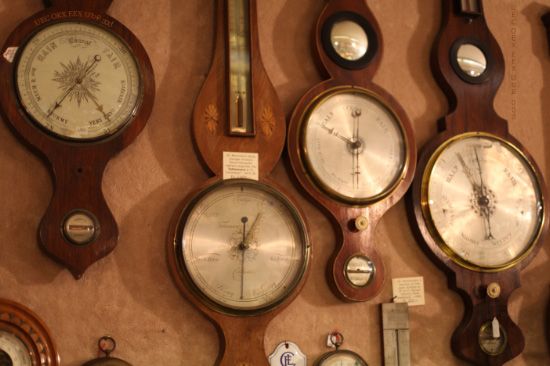 |
| |
|
|
| |
|
|
|
| |
|
|
|
| |
Truly, truly, I say to you, if any one keeps my word, he will never see death. The Jews said to him, “Now we know that you have a demon. Abraham died, as did the prophets; and you say, ‘If any one keeps my word, he will never taste death.’ Are you greater than our father Abraham, who died? And the prophets died! Who do you claim to be?” Jesus answered, If I glorify myself, my glory is nothing; it is my Father who glorifies me, of whom you say that he is your God. But you have not known him; I know him. If I said, I do not know him, I should be a liar like you; but I do know him and I keep his word. Your father Abraham rejoiced that he was to see my day; he saw it and was glad. The Jews then said to him, “You are not yet fifty years old, and have you seen Abraham?” Jesus said to them, Truly, truly, I say to you, before Abraham was, I am. So they took up stones to throw at him; but Jesus hid himself, and went out of the temple. |
|
| |
|
John 8:51-59 |
|
Astronomy and Physics and Knowledge or Pride |
|
|
|
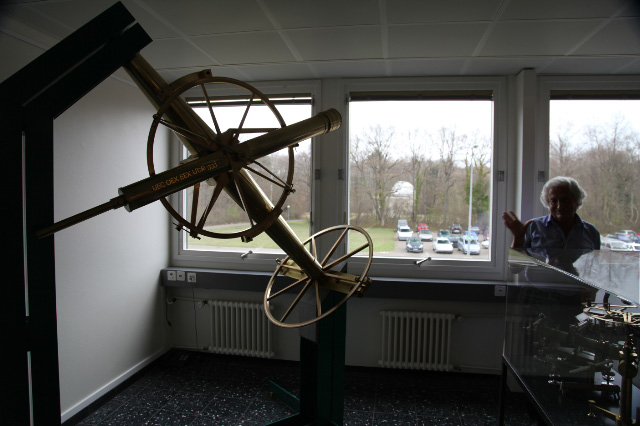
|
| |
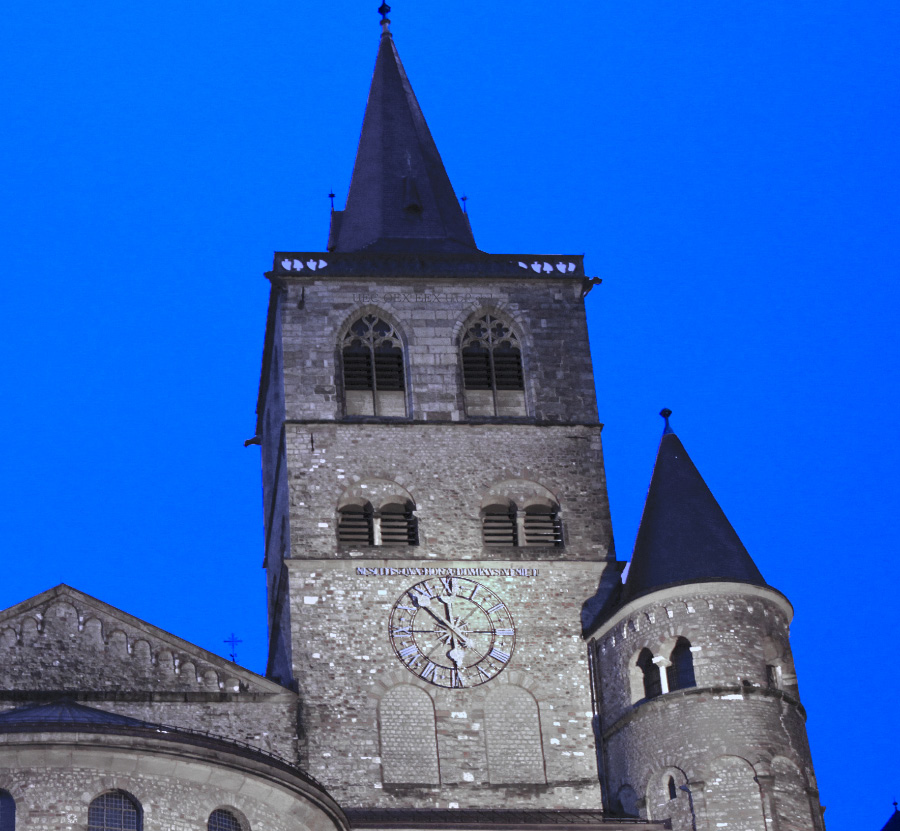 |
|
| |
NESCITIS QVA HORA DOMINVS VENIET – Trierer Dom
You do not know what time the Lord is coming. |
|
| |
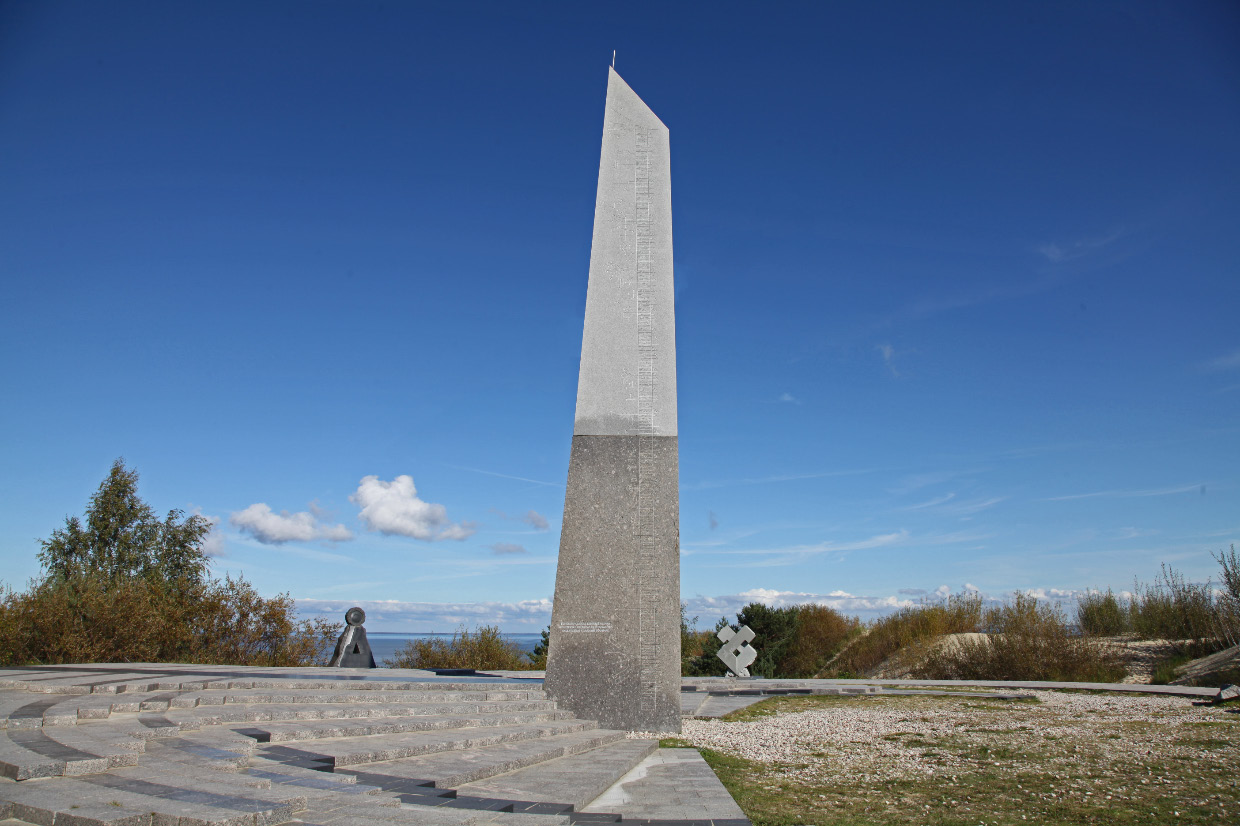 |
|
| |
Saulės laikrodis – sundial atop the Parnidžio kopa – Parnidis dune, architect Ričardas Krištapavičius, sculptor Klaudijus Pudymas |
|
| |
|
|
| |
|
|
| |
Lord, have mercy on us.
Christ, have mercy on us.
Lord, have mercy on us.
Christ, hear us.
Christ, graciously hear us.
God the Father of Heaven,
Have mercy on us.
God the Son, Redeemer of the world,
Have mercy on us.
God the Holy Ghost,
Have mercy on us.
Holy Trinity, one God,
Have mercy on us. |
|
| |
|
|
| |
Holy Mary,
pray for us.
Holy Mother of God,
pray for us.
Holy Virgin of virgins,
pray for us.
Mother of Christ,
pray for us.
Mother of divine grace,
pray for us.
Mother most pure,
pray for us.
Mother most chaste,
pray for us.
Mother inviolate,
pray for us.
Mother undefiled,
pray for us.
Mother most amiable,
pray for us.
Mother most admirable,
pray for us.
Mother of good counsel,
pray for us.
Mother of our Creator,
pray for us.
Mother of our Savior,
pray for us.
Virgin most prudent,
pray for us.
Virgin most venerable,
pray for us.
Virgin most renowned,
pray for us.
Virgin most powerful,
pray for us.
Virgin most merciful,
pray for us.
Virgin most faithful,
pray for us.
Mirror of justice,
pray for us.
Seat of wisdom,
pray for us.
Cause of our joy,
pray for us.
Spiritual vessel,
pray for us.
Vessel of honor,
pray for us.
Singular vessel of devotion,
pray for us.
Mystical rose,
pray for us.
Tower of David,
pray for us.
Tower of ivory,
pray for us.
House of gold,
pray for us.
Ark of the Covenant,
pray for us.
Gate of Heaven,
pray for us.
Morning star,
pray for us.
Health of the sick,
pray for us.
Refuge of sinners,
pray for us.
Comforter of the afflicted,
pray for us.
Help of Christians,
pray for us.
Queen of angels,
pray for us.
Queen of patriarchs,
pray for us.
Queen of prophets,
pray for us.
Queen of apostles,
pray for us.
Queen of martyrs,
pray for us.
Queen of confessors,
pray for us.
Queen of virgins,
pray for us.
Queen of all saints,
pray for us.
Queen conceived without Original Sin,
pray for us.
Queen assumed into Heaven,
pray for us.
Queen of the most holy Rosary,
pray for us.
Queen of peace,
pray for us. |
|
| |
|
|
| |
Lamb of God, who takes away the sins of the world,
Spare us, O Lord.
Lamb of God, who takes away the sins of the world,
Graciously hear us, O Lord.
Lamb of God, who takes away the sins of the world,
Have mercy on us. |
|
| |
|
|
| |
Pray for us, O Holy Mother of God,
That we may be made worthy of the promises of Christ. |
|
| |
|
|
| |
Grant, we beseech Thee, O Lord God, that we Thy Servants may enjoy perpetual health of mind and body and by the glorious intercession of the Blessed Mary, ever Virgin, be delivered from present sorrow and enjoy eternal happiness. Through Christ Our Lord. Amen. |
|
| |
|
|
| |
|
Approved in 1587 by
Pope Sixtus V (r. 24 April 1585 to 27 August 1590†) |
| |
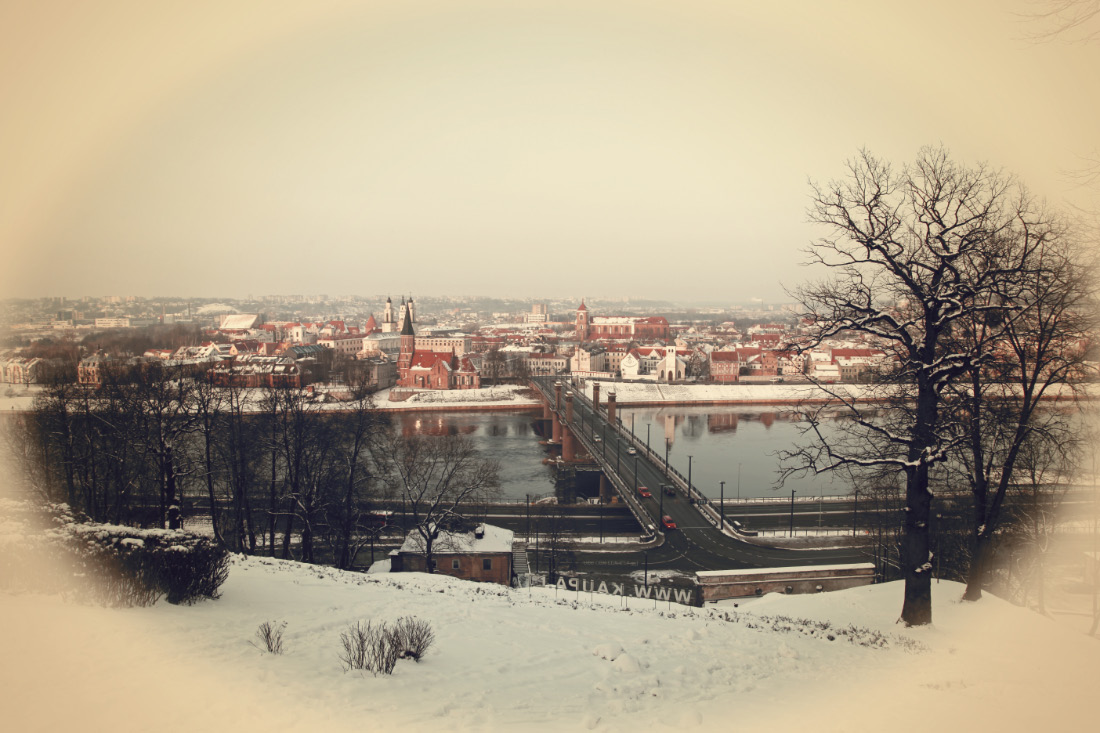 |
|
| |
Vytauto Didžiojo tiltas – Vytautas the Great Bridge, originally built in 1812 and used by Napoleon’s Army fleeing from Russia,
though only 256 meters in length, in the 19th century it was in one sense the longest bridge in the world. The territory on the
left bank of the Nemunas River, Aleksotas, (near side in this photograph) was Polish and therefore used the Gregorian Calendar,
while from the right bank began Tsarist Russian territory, which used the old Julian Calendar, at this time 13 days behind the Gregorian,
so it took 13 days to cross from the right bank to the left bank across this bridge! Both sides are now in Kaunas, Lithuania, thank God.
|
|
|
|
|
| A remarkable mathematical achievement in its day — that is 45 Before Christ or 709 ab urbe condita, from the founding of the city of Rome — who among the learned readers of these paragraphs believes that any Christian Church would still in the XXI century be basing their liturgical calendars and annual festival cycles on the defective and pagan Julian Calendar but for the reason that "The Latins" in the person of Pope Gregory XIII "single-handedly imposed" through the Papal Bull Inter Gravissimas issued on 24 February 1582 the mathematically superior, if unfortunately named, "Gregorian" Calendar on the Catholic Church and the Papal States, exhorting, requesting and recommending other kings and princes and the republics to adopt it also? How much longer will this stand as one of the arch-examples of schism for schism's own sake? |
|
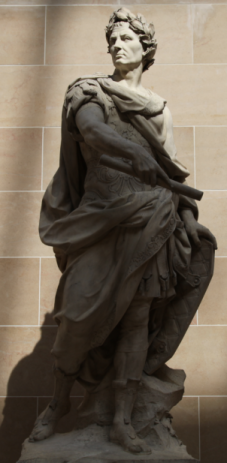
Julius Caesar. Louvre |
|
|
The Orthodox-Catholic Church |
|
|
| |
|
|
|
|
Calendar used: |
|
| the Catholic Church |
|
|
|
|
| |
This list of particular Churches is not immediately analogous to the lists which appear below under the sub-headings for the Orthodox and the Oriental Orthodox Churches, as the Churches which appear under this sub-heading for the Catholic Church can not be called autocephalous in terms of Church governance. They all accept the immediate primary jurisdiction of the Pope. Their autonomy is a complicated topic, varying among them as also across time and place and circumstances. (The 23 Eastern Catholic Churches all bear the designation sui juris.) In place of the term particular Churches, or perhaps in addition thereto, one might speak of different Liturgical Rites, but hereto such an expression is not fully adequate, as it is not only aspects of the Divine Liturgy, the Mass, which vary among them, but also the ways in which other of the sacraments are celebrated. So one might speak of Sacramental Rites. Moreover, one can discern herein groups or groupings of Sacramental Rites, based on the histories of their transmission and on geographic and other factors: the Latin Family; the Coptic-Alexandrian Family; the Antiochian-Syriac Family, itself further subdivided between West Syriac and East Syriac; and the Byzantine-Greek (and later also Slavonic) Family which sprang from the Antiochian and the Armenian Rite, rather in a family of its own. By another scheme all the non-Latin particular Churches are simply called Eastern Catholic.
Glorious is the cultural diversity within Orthodox-Catholic Christianity.
Yet one must also recognize that some of this complexing springs forth from schism. After the particular Churches which did not accept the Council of Chalcedon, the Fourth Ecumenical Council of 451, and then again after or concurrently with the 9th through 13th-century progressive estrangement between Latin "West" and Byzantine-Greek (and also Slavonic) "East" which came to be known as the Great Schism, the Catholic Church variously, haltingly, episodically won over some adherents from the others. So too did the Orthodox in Communion with Constantinople. In the event of the reunification which is the goal being explored and pressed in these pages, it might be fair to assume that, for example, the Coptic Rite Catholic Church would simply be subsumed into the two-thousand-year-old Coptic Orthodox Church. Would the united particular Church then be called the Coptic Orthodox-Catholic Church? But be ever mindfull of the decided proclivity toward turf struggles, together with regular old episcopal pride, which plaque the Church perennially. Here, at least in the times we live in, one thinks not first of Copts but of the Ukrainians and Russians of the Byzantine-Slavonic Rite. Pray and persuade, but do not be surprised to find resistance along the path for no better reason than that this or that bishop wants to go on reigning and to do so without a boss anywhere in the wings. |
|
|
|
| |
|
Latin Family |
|
|
|
|
| |
|
the Roman or Latin Rite – by far and away the most widespread within the Catholic Church |
|
|
|
|
| |
|
(and here one could note the further complexity arising from differences in the Ordinary Form, the Extraordinary Form and of the Anglican Use. Tensions of a Twentieth Century genesis between those loyal to the former two, can perhaps be roughly analogized to the tensions of a Seventeenth Century genesis between the Старообрядцы – Old Ritualists (a.k.a., Old Believers) and the Patriarchate within the Russian Church (what we should be calling the Church in Russia), but perhaps not.) |
|
|
|
|
| |
|
the Ambrosian Rite of the Archdiocese of Milan |
|
|
|
|
| |
|
the Mozarabic Rite of the Iberian peninsula, which dates back at least to the 6th century |
|
|
|
|
| |
|
the Bragan Rite of Portugal, dating to the 12th century or earlier |
|
|
|
|
| |
|
the Rite of the Order of Carmel (Saint Berthold, 1154) |
|
|
|
|
| |
|
the Rite of the Carthusian Order (Saint Bruno, 1084) |
|
|
|
|
| |
|
the Dominican Rite or the Rite of the Order of Friars Preacher (OP) (Saint Dominic,1215) |
|
|
|
|
| |
|
Alexandrian/Coptic Family |
|
|
|
|
| |
|
the Coptic (Egyptian) Catholic Church (reunited with Rome in 1741), |
|
|
|
|
| |
|
using Coptic and Arabic as liturgical languages |
|
|
|
|
| |
|
the Ethiopian/Abyssinian Catholic Church (reunited with Rome in 1846), |
|
|
|
|
| |
|
using Geez as the liturgical languag |
|
|
|
|
| |
|
the Eritrean Catholic Church |
|
|
|
|
| |
|
Antiochian- East Syriac Family |
|
|
|
|
| |
|
the Chaldean Catholic Church of Babylon |
|
|
|
|
| |
|
the Syro-Malabar Church |
|
|
|
|
| |
|
(India; with the second largest number of adherents of any Eastern Catholic Church, after the Ukrainian Greek Catholic Church; an ancient particular Church with a tradition of descent from Apostle Saint Thomas) |
|
|
|
|
| |
|
Antiochian- West Syriac Family |
|
|
|
|
| |
|
the Syro-Malankara Catholic Church |
|
|
|
|
| |
|
(Southern India; using Syriac, Malayalam, Tamil, Hindi and English) |
|
|
|
|
| |
|
the Syriac Maronite Church of Antioch, using Aramaic as the liturgical language |
|
|
|
|
| |
|
(Lebanon; founded by Saint Maroun (or Maron or Maro, 410 †))
The righteous will flourish like a palm tree, they will grow like a cedar of Lebanon |
|
|
|
|
| |
|
the Syriac Catholic Church, using Syriac and Aramaic |
|
|
|
|
| |
|
Armenian Catholic Church (in union with Rome since 1742; with perhaps one million faithful) |
|
|
|
|
| |
|
Byzantine-Greek and Slavonic Family |
|
|
|
|
|
|
the Melkite Greek Catholic Church, Headquarted in Damascus and using both Greek and Arabic |
|
|
|
|
| |
|
the Ukrainian Greek Catholic Church – Українська Греко-Католицька Церква (УГКЦ) |
|
|
|
|
| |
|
With its seat in Kiev-Galicia, the largest of the Eastern Catholic Churches with perhaps six million faithful |
|
|
|
|
| |
|
the Belarusian Greek Catholic Church – Беларуская Грэка-Каталіцкая Царква |
|
|
|
|
| |
|
the Russian Greek Catholic Church – Российская Греко-Католическая Церковь |
|
|
|
|
| |
|
Russian Orthodox Church in communion with Rome
и Леонид Фёдоров и Владимир Сергеевич Соловьёв |
|
|
|
|
| |
|
the Ruthenian Catholic Church |
|
|
|
|
| |
|
Originating among the Rusyn people who lived in Carpathian Ruthenia,
but now headquarted in Pittsburg, Pennsylvania |
|
|
|
|
| |
|
the Byzantine Church of Croatia, Serbia and Montenegro – Византијска црква Хрватске, Србије и Црне Горе |
|
|
|
|
| |
|
the Macedonian Greek Catholic Church – Католичка Црква од Византиски Обред во Македонија |
|
|
|
|
| |
|
the Bulgarian Greek Catholic Church – Католическата Църква от Византийско-славянски обред в България |
|
|
|
|
| |
|
the Romanian Church United with Rome, Greek-Catholic – Biserica Română Unită cu Roma, Greco-Catolică |
|
|
|
|
| |
|
the Hungarian Greek Catholic Church – Magyar görögkatolikus egyház |
|
|
|
|
| |
|
the Slovak Byzantine Catholic Church – Gréckokatolícka cirkev na Slovensku |
|
|
|
|
| |
|
Italo-Albanian Byzantine Catholic Church, using Greek and Italo–Albanian as liturgical languages |
|
|
|
|
| |
|
the Albanian Byzantine Catholic Church – Shqiptar Kisha Katolike Bizantine |
|
|
|
|
| |
|
the Greek Byzantine Catholic Church – Ελληνόρρυθμη Καθολική Εκκλησία |
|
|
|
|
| |
|
|
|
|
|
|
| the Oriental Orthodox Churches |
|
|
|
|
| |
those five autocephalous Churches (six, if the Eritrean is to be understood as separate, which the Ethiopians dispute) which are in Full Communion with each other but which are not yet in Full Communion with the Catholic Church or with any of the Orthodox Churches which are in Full Communion with the Patriarchate of Constantinople. These five are also often known, accurately, as Non-Chalcedonian Churches, as they did not accept the formulae of the Council of Chalcedon, the Fourth Ecumenical Council, of 451, and therewith became separated from the main body of Christians. They are also known, inaccurately, as Monophysite, a term which does not, and never has, accurately described their understanding of Christology, which is now known to be substantially identical to that of the Orthodox Churches and the Catholic Church, a circumstance which should eliminated the need for this portion of the Schism(s): |
|
|
|
| |
|
the Coptic Orthodox Church of Alexandria |
|
|
|
|
| |
|
the Syriac Orthodox Church of Antioch |
|
|
|
|
| |
|
(including the Malankara Jacobite Syrian Orthodox Church in India) |
|
|
|
|
| |
|
the Malankara Orthodox Syrian Church (also called the Indian Orthodox Church) |
|
|
|
|
| |
|
the Armenian Apostolic Church |
|
|
|
|
| |
|
the Ethiopian Orthodox Tewahedo Church |
|
|
|
|
| |
|
(including the the Eritrean Orthodox Tewahedo Church) |
|
|
|
|
| |
|
|
|
|
|
|
| the Orthodox Churches |
|
|
|
|
| |
sometimes, regretably and inaccurately as in fact they are universal, called Eastern Orthodox, those fourteen autocephalous Churches which are in Full Communion with the Patriarchate of Constantinople and with each other and whose autocephaly is recognized by each of the other thirteen; none of which are yet in Full Communion with any of the Oriental Orthodox Churches or with the Catholic Church: |
|
|
|
|
| |
|
the Ecumenical Patriarchate of Constantinople |
|
|
|
|
| |
|
the Orthodox Church of Alexandria |
|
|
|
|
| |
|
the Orthodox Church of Antioch |
|
|
|
|
| |
|
the Orthodox Church of Jerusalem |
|
|
|
|
| |
|
the Orthodox Church of Russia |
|
|
|
|
| |
|
the Orthodox Church of Serbia |
|
|
|
|
| |
|
the Orthodox Church of Romania |
|
|
|
|
| |
|
the Orthodox Church of Bulgaria |
|
|
|
|
| |
|
the Orthodox Church of Georgia |
|
|
|
|
| |
|
the Orthodox Church of Cyprus |
|
|
|
|
| |
|
the Orthodox Church of Greece |
|
|
|
|
| |
|
the Orthodox Church of Poland |
|
|
|
|
| |
|
the Orthodox Church of Albania |
|
|
|
|
| |
|
the Orthodox Church of the Czech lands and Slovakia |
|
|
|
|
| |
|
|
|
|
|
|
|
| |
|
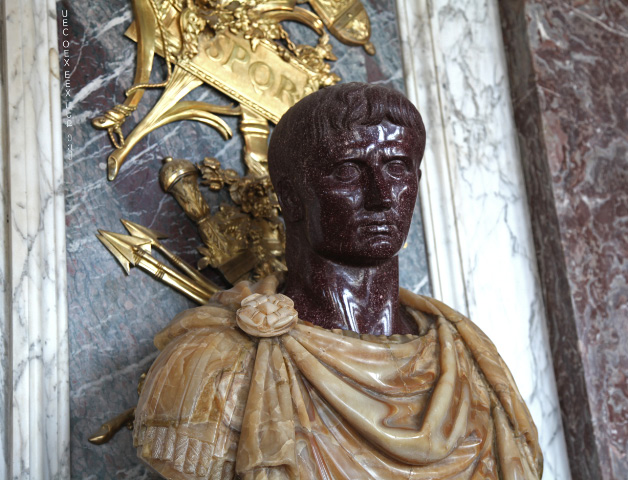 |
| |
|
Julius Ceasar in Versailles |
| |
|
© ™ ® 2010 UEC ОЕХ ΕΕΧ ՄԵՔ ეექ All rights reserved. |
|